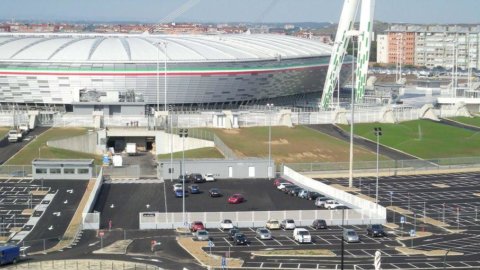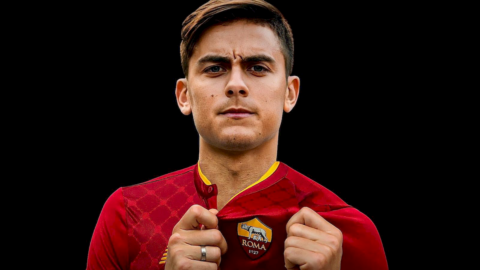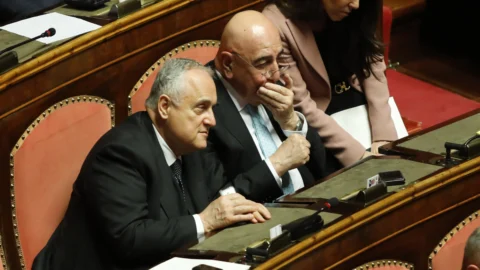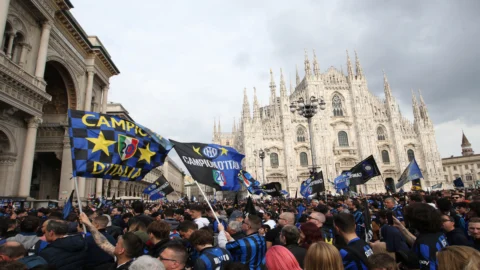While waiting for the various technical "projects" (first Luis Enrique, now Zeman) to turn into results on the field, James Pallotta's Roma with stars and stripes is already about to achieve a concrete project. The American president himself revealed it to Il Sole 24 Ore: 200 million euros for a new stadium, all yellow and red, to be built in a location yet to be determined, but which sees the area close to the Tor di Valle racecourse in pole position.
The announcement could seem like the umpteenth joke typical of Italian football, which has a taboo on stadium speech which has been slammed for decades in all major cities, especially on both sides of Milan and Rome, and that only Juventus she managed to break. Juventus which is also indirectly involved in this case, given that the company that the Americans in Rome asked to select the areas to build the new plant is Cushman & Wakefield, which only has the name and a few shareholders as an American, but the ownership is all Italian, and looks at it wears the hated (around the Tiber) black and white colors: is Exor degli Agnelli which owns 70% of the real estate advisory company.
This time, therefore, As Roma seems to want to get serious, thanks to the motivations of a foreign ownership (therefore wealthy and distant from the prehistoric mentality of the boot) and ambitious, to the support of a club that has already successfully laid the foundations for a stadium of the highest level such as the Juventus Stadium, and even at the blessing of the mayor Gianni Alemanno, representing a political class that generally, between legislative gaps and power games, is the first spoke in the works: "We waited a long time, there were difficulties and problems of agreement between the parties, but I'm sure at least one stadium will come up by the end of the year”, predicted the mayor of the Campidoglio, also alluding to the possibility that Lazio would be the first to move.
The lands identified for the eagerly awaited structure are therefore three: in addition to the favourite Tor di Valle, owned by the Parnasi family (to which part of the shares still held by the minority shareholder Unicredit would also be offered in the deal), which confirmed the deal, the Bufalotta area by Claudio Toti and an industrial area abandoned by Eni in Testaccio are in the running, an area that housed the old stadium in the 30s (in which, however, Roma did not win the first championship in 1942: that season was played in the current Flaminio stadium).
However, the oil group has made it known that there are no ongoing negotiations for the sale of the land, which however does not exclude the possibility that Pallotta's emissaries will come forward with Paolo Scaroni anyway. The final decision, in any case, is expected by the end of the year, at the latest at the beginning of 2013, e the construction, in the intentions of the Giallorossi top management, by 2016.
Italian football could therefore see the light within a few years of a new stadium owned by a club, after the Juventus Stadium inaugurated a year ago (and in which Juve hasn't lost a game yet). However, the event should - it is hoped - be only the second in a long series, which will finally help to resolve, albeit gradually and budget and laws permitting, the age-old problem of the balance sheets of Italian football clubs, who continue to play in dysfunctional facilities, in some cases even dilapidated, from which they derive much less than 20% of the profits (Milan 16% and Inter 15%, for example), while in England and Germany stadiums generate more than a third of turnover and the two richest clubs in the world, Real Madrid and Barcelona, own their plant and collect respectively 123 and 110 million euros a year.
Results to which only Juventus can currently aspire, whose stadium to tell the truth was not even the first example in Italy, and, however futuristic (multifunctional, open every day with shops, bars, restaurants, in mall), not even the most avant-garde one. Indeed considering that the Giglio di Reggio Emilia was built 16 years earlier, in 1994, in just 8 months and at a cost of 25 billion lire, had nothing to envy to modern stadiums. Indeed, the small plant with scarce 30 seats (later reduced to 20) was even too advanced for those times: it already had turnstiles (formally instituted only with the Maroni law of 2007 after the murder in Catania of the police officer Filippo Raciti), nominal tickets and security cameras. A small corner of England in the heart of Emilia, and well before the pharaonic Juventus Stadium, it is a pity however that in 2005 the grenade company went bankrupt and included the stadium among the assets of the crash, now in the hands of the bankruptcy trustee.
And the others? For now, still at stake. In Milan the San Siro 2000 consortium (Inter and Milan are part of it at 50% each) , which has been working on the theme of a new stadium for years, has the Giuseppe Meazza stadium managed by the Municipality which, however, although it has 4 Uefa stars and was added in 2009 in second place in the Times ranking of the most beautiful stadiums in the world, it is always the same: too big for the canons of modern football, which between television rights and different habits tends to prefer facilities with 40 to 50 thousand seats (the Juventus Stadium makes 41 thousand), not very functional and above all still divided between two companies.
News, at least on the Rossoneri side, could only arrive if the negotiation between the Berlusconi family and the Qatar fund led by the Al Thani family (the same as the PSG which "sacked" via Turati in the summer) for the sale of 30% of Milan. In that case fresh money would arrive for 250 million, enough to evaluate, among other things, the construction of a new stadium.
Something that the Nerazzurri president Massimo Moratti is also thinking of doing, however it is not known exactly where and when, and Claudio Lotito, patron of the other team in Rome, Lazio, which has been planning the Biancoceleste Citadel of Sport for years, for which, however, money is needed ("We should invoice double") and encouraging news from the reform which is now being examined by the Senate and which, in the opinion of many, still presents too many constraints for companies.
Where, on the other hand, owned stadiums seem even further away is in Naples and Florence. The mayor of the Campania capital, Luigi De Magistris, has promised that by the end of his mandate the administration will have done everything to deliver a new stadium to the Azzurri, but the project still seems smoky for now. On the other hand, that of the Della Valles for the Cittadella Viola has definitively faded: they have not obtained the go-ahead from the Municipality of Florence.





